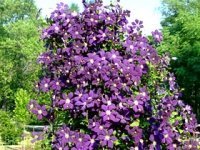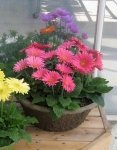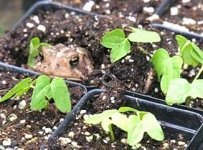Easy-Care Sempervivums
What's not to love about a plant whose name translates to "always alive?" Sempervivums (semper, meaning "always," and vivo, meaning "alive") are commonly called hens-and-chicks, for obvious reasons, and houseleeks, for obscure ones. Whatever you call them, these charming succulents are remarkably durable and surprisingly prolific.
Native to the mountains of central and southern Europe and the Mediterranean islands, sempervivums form low-growing rosettes of pointed, fleshy leaves. They propagate by forming new plants ("chicks") at the end of long stolons. A single mother plant (the "hen") can colonize a rocky crevice in a remarkably short time, all with out supplemental fertilizer and, once established, water.
In fact, overwatering and overfertilizing spell trouble for sempervivums. These durable little plants thrive on neglect. It's hard to believe they can grow so well with so little to work with -- some sunshine and whatever water and nutrients they can gather from their rocky perch. On the other hand, such meager surroundings mean they have little in the way of competition from other plants. Mother Nature has her ways, and it pays us gardeners to heed her.
In their alpine habitat, sempervivums are often found growing in rocky crevices. So, excellent drainage is a must, and a niche in a stone wall or rock garden is a perfect site. Set in rich, damp garden soil, the plants will likely suffer from rot or be overrun by more vigorous plants.
Read more about Sempervivums on the National Gardening Association website








